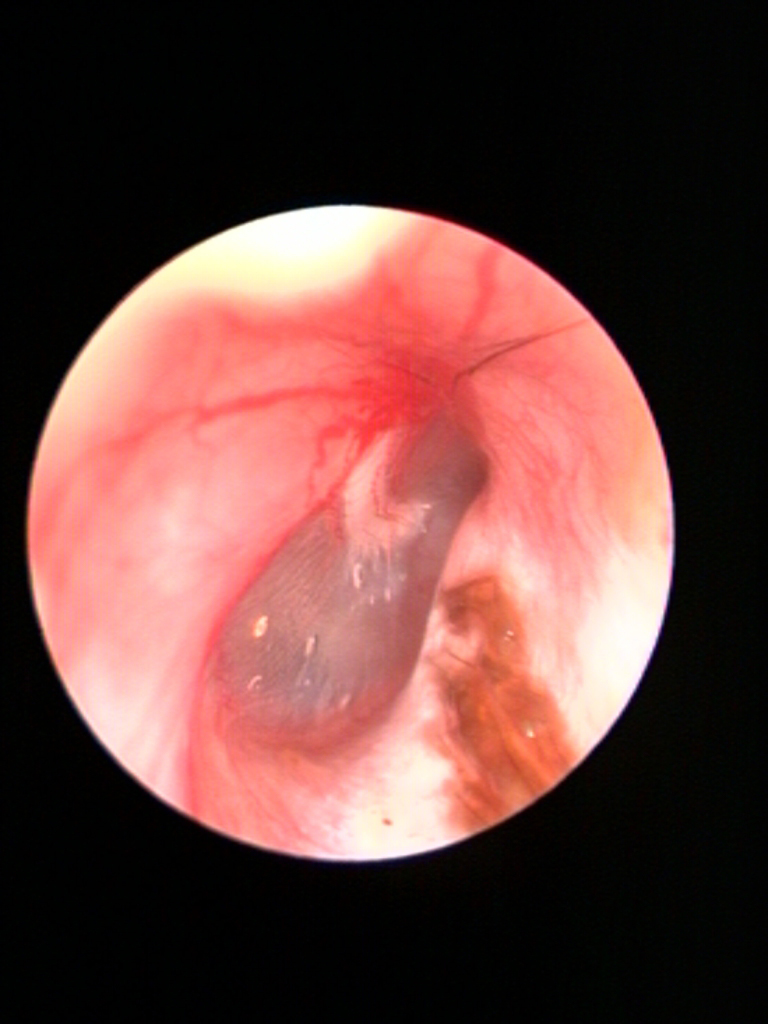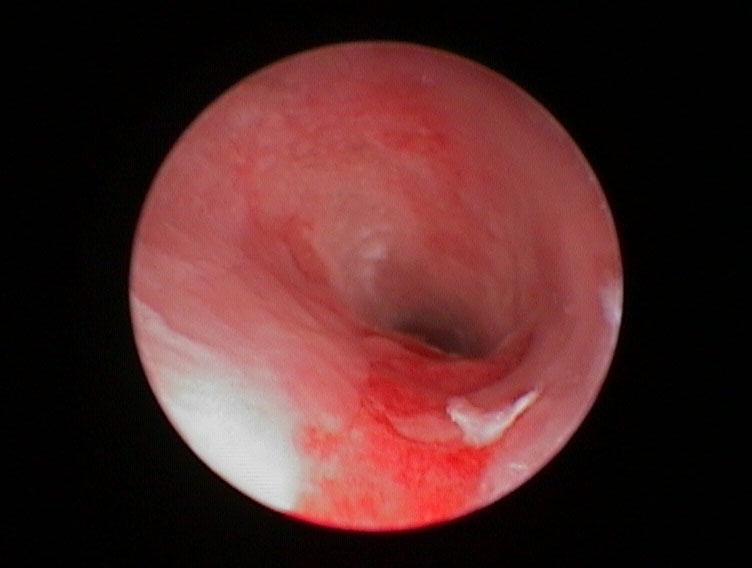Why Should I Bring my Pet to Willows for Investigations and Treatment of Ear Disease?
Willows is one of Europe’s leading small animal referral centres. Our state-of-the-art hospital is led by internationally renowned Specialists who are committed to providing the highest standards of veterinary care.
Willows Skin and Ear Clinic is led by Drs Richard Harvey and Tania Nunes Rodrigues, European Specialists in Veterinary Dermatology. Dr Richard Harvey has written one of the standard texts on canine ear disease and is one of the founding fathers of Veterinary Otology.
As one of only referral hospitals in the UK to be home to two European Specialists in Veterinary Dermatology our Skin and Ear experts are supported by our multidisciplinary team of Specialists across a number of disciplines including Anaesthesia, Diagnostic Imaging, with access to advanced imaging facilities including CT, MRI and video-otoscopy which allows cases of ear disease (otitis) to be investigated fully. In addition, Willows has a large, dedicated team of Nurses and clinical support staff available 24 hours a day, every day of the year to provide round-the-clock care for your pet.
What is Ear Disease?
Ear disease known as otitis is a term that describes inflammation of the ear. Inflammation can affect both the skin of the ear flap (pinna) and the skin lining the ear canals.
Most cases of ear disease are long-standing, particularly in dogs, and it can be very challenging to identify the cause and any perpetuating factors that enable the disease to thrive. There are a number of primary factors that can directly cause ear disease, e.g., ear tumours and foreign bodies such as grass seeds. There are also a range of predisposing factors that make external ear canal disease more likely, for example, Shar Pei’s have very narrow external ear canals and Cocker Spaniels have abnormally glandular and hairy external ear canals which can deteriorate extremely quickly.

What Causes Ear Disease?
Inflammation of the ear can be caused by several factors, and there is often more than one cause present at any given time. Inflammation of the skin lining the ear canals is frequently a result of more widespread skin disease, and so Dermatologists are responsible for treating these cases.
Contrary to popular belief, ear infections caused by bacteria and fungi very rarely initiate the problem. These infections usually take advantage of an altered and inflamed ear canal caused by other factors. The most common primary causes of ear disease include parasites, foreign bodies (i.e., grass seeds) and allergic skin disease. Less common causes include hormonal diseases and growths (tumours) in the ear canals. Factors such as increased humidity and poor ventilation (e.g., from excessive hair) can also contribute to the formation and persistence of otitis.
Perhaps the main cause of recurrent ear disease is an underlying allergy, particularly atopy. Atopy is a common cause of skin disease and is often accompanied by recurrent or chronic ear disease. Due to their nature ear disease reflects an underlying allergy, as such they cannot be cured, however they can be controlled.
Additional factors that contribute to secondary infection with bacterial and yeast, include when the soft tissues within the external ear canal swell, predisposing a patient to further infection and another cycle of pathological change.
Figure 1: The normal tympanic membrane (ear drum) of a dog


How is Ear Disease Diagnosed?
In many cases, otitis externa (external ear canal only) can be diagnosed with a thorough history and clinical examination. In some cases, such as those caused by grass seeds, the cause of otitis will be apparent at a very early stage. Secondary infections can be identified by taking swabs from the ears and examining them under a microscope.
In more long standing, recurrent or difficult cases that are not responding to treatments, the risk of otitis media (inflammation beyond the ear drum) becomes much higher and further investigations are usually needed. In order to assess this area, diagnostic imaging is required, and this is most effectively achieved with a CT scan, which gives a very detailed image of the patient’s skull. Under general anaesthesia, a camera called a video-otoscope can also be inserted deep down into the external ear canal to assess the deeper portions of the canal and inspect the tympanic membrane (ear drum) for damage. It is often necessary to take samples or swabs from these deeper parts, including beyond the ear drum, to ensure that deeper infections are identified.

What Treatments are Available?
Willows Specialist Skin and Ear team have the very best expertise and world class equipment to effectively identifying the primary, predisposing and perpetuating factors of your pet’s ear problem, ensure that the most appropriate management and treatment plan is developed for each individual patient.
Ear disease can only be treated effectively when all the elements contributing to its formation have been addressed. Secondary infections are usually treated with ear rinsing procedures, appropriate ear drops, tablets and cleaning solutions. Ideally the initiating factors are identified and treated accordingly. Many cases of recurrent otitis in dogs and cats are caused by allergic skin diseases, as such management of these condition is essential to prevent future relapses. For some patients, treatment changes are also required to alter factors such as ear canal humidity and ventilation.
Common Conditions Treated
- Recurrent bilateral external ear disease in:
- Chronic unilateral ear disease (dogs)
- Chronic unilateral ear disease (cats)
- Otitis media, or middle ear disease
To support our pet owners and patients in achieving the best possible diagnosis and treatment plan we offer a range of fixed-price packages within our Ear Clinic for common conditions.
To find out more about our Fixed-Price packages contact our team on 0121 710 7070 or email enquires@willows.uk.net
What can I Expect if my Pet has Been Diagnosed with Ear Disease?
For patients with otitis external (external ear canal only), the prognosis for a successful outcome is usually very good if the contributing factors can be identified and addressed. Cases of otitis media (involvement beyond the ear drum) carry a more uncertain prognosis; however, many can be successfully treated with the aid of video-otoscopy procedures. In rare poorly responsive cases, surgery is sometimes needed.
Skin and Ear Clinic
Find out more
To assist owners whose pets have skin and ear conditions, we have put together a range of information pages to talk you through some of the more common dermatology conditions seen by our Specialist team.

